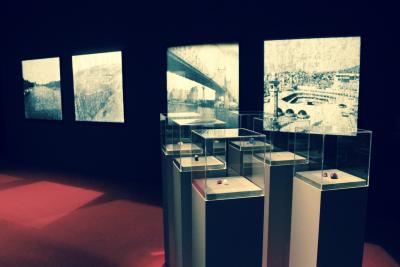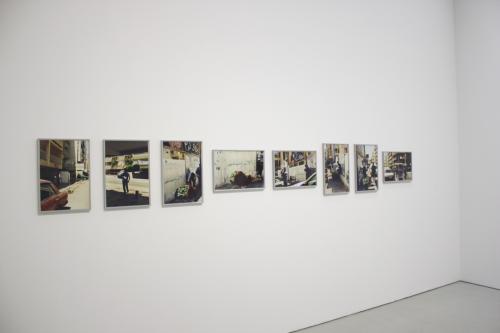Beirut's thriving art scene on show at Rome MAXXI

ROME - The vibrancy of Beirut's art scene is on full display at Rome's MAXXI museum until May 2018, in a sprawling show that tackles the themes of place, conflict and memory.
Part of the museum's "Interactions across the Mediterranean" series, "Home Beirut: Sounding the Neighbours" features over 100 pieces of work from the city, arranged around four "homes": memory, providing a refuge for people, mapping the territory and joy. It presents the work of 36 artists in a variety of media from architecture to film, music to sculpture. Indeed, one of the great achievements of the show is its constant ability to surprise, using Zaha Hadid's curvaceous building to great effect.
Given the turbulent history of the city in the last century, politics and war mark much of this exhibition. Mazen Kerbaj and Laure Ghorayeb's drawings, independently compiled during the 2006 Lebanon war, snake along one of the main corridors, detailing the devastation of the 33-day conflict.
Similarly, Roy Dib's "Here and There - Rome Edition," intended as a performance piece but equally striking on its own, reacts to the events of 2013 in Syria's largest city, Aleppo. Dib drapes large, punctured rolls of colourful fabric from the ceiling to recall the period when neighbouring housing blocks began taking down their curtains and raising them between balconies to provide cover from sniper fire.
It is the careful juxtaposition of many of these more political pieces which makes the show so effective. Paola Yacoub's "Les Fleurs de Damas" is a series of photographs of flower sellers who suddenly emerged on Beirut's streets during the 2002 Syrian occupation of the city. It led to the suspicion that they were not vendors at all, but Syrian spies sent to keep an eye on the residents. As the exhibition explains, "day after day, they would return to the same streets with roses that were more and more beautiful, but no one would buy them."
Nevertheless, war is not the only factor animating Beirut's artists. In the last 20 years the city has witnessed a construction boom, with major urban projects underway and swathes of land being handed over to developers.
Visitors are invited to walk on Marwan Rechmaoui's rubber map of Beirut, physically exploring its urban layout. But the conflicting interests of the city are best brought out by the work of Marwa Arsanios. Her delicate drawing series, "Resilient Weeds," emerged from the city's waste crisis between 2015 and 2016, when the Naameh landfill site was handed over for development. It details the various flora and fauna that survive on these landfills: emblematic, perhaps, of the city's own survival.
Video installations play a large role throughout exhibition. "Remembering the Light" by Joana Hadjithomas and Khalil Joreige, explores the qualities of light underwater, with actors and divers drifting at different depths. The duo returns later in the show with films from the hills above Beirut on evenings of celebration, when the city twinkles with fireworks and gunshots. Ziad Antar, likewise, explores the variety of interpretations given to a single song in "Night of Love I, II, III."
The curators are to be congratulated for a show that truly delivers on its promise to present aspects of Beirut's "kaleidoscopic artistic scene." It seems only fair that its last section should explore joy. When visitors get there, they can listen to a selection of songs from Lebanese musicians and marvel at how the city sustains such a vibrant community of artists, despite its troubled past.
jp-tw



